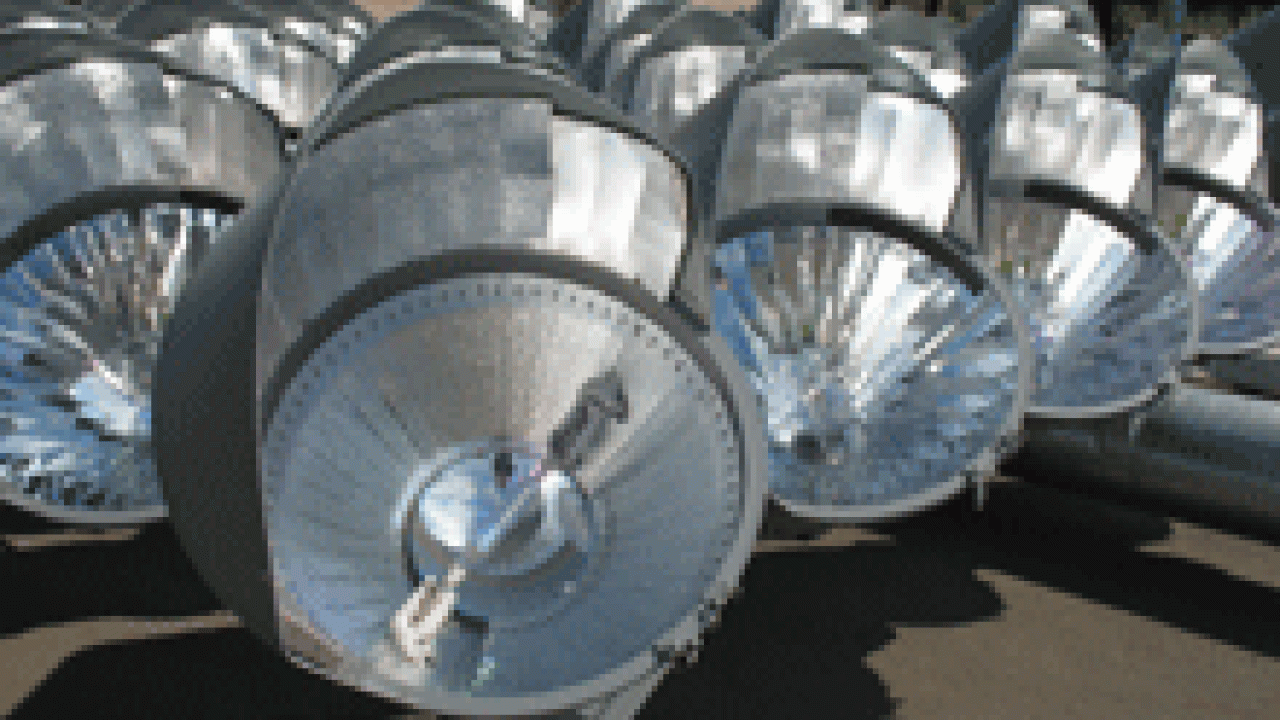At 8:30 p.m. last Friday, just seven minutes after sunset, a new day dawned at the 1-year-old Aggie Stadium.
It happened with the flip of a switch. Fifteen to 20 minutes later, 180 metal halide lights — perched on four steel poles erected a day earlier — reached full intensity, most of them 1,500 watts strong.
"I was impressed," said Chancellor Larry Vanderhoef, who, accompanied by his wife, Rosalie, stood on the Aggie athletics logo at midfield during the Friday night test. "It seemed as if it were daylight every place on the field.
"We're looking forward to watching games in the cool of the evening rather than the heat of the afternoon," he added.
Without lights last year, UC Davis began its football season in the new stadium with a noon kickoff on Sept. 1 — a day when the temperature in the stands neared 100 degrees. Dozens of people complained of heat-related problems. This year's first home game of the season is set for Sept. 13 — kickoff time 6 p.m. against Portland State.
The $31 million Aggie Stadium project included a underground conduit for the lighting system, but not the poles and lights. So, when the athletics department raised additional funding, the installation was relatively simple: build the footings, put up the poles and lights, and run the wiring. The cost: $600,000.
The gas-discharge, high-intensity lights will be used for more than football. Aggie Stadium is also home to the women's lacrosse team, and while it has not played night games in the past, the lacrosse squad may decide to do so in the future, Associate Athletics Director Bob Bullis said.
In addition, the stadium is available for evening concerts and community events. Indeed, Bullis said, the lights will be put to use for the first time on June 13, for Davis High School commencement.
The light poles rise 120 feet above the stadium concourse, and each holds 45 lights. Just four years ago, instead of 180 total fixtures, a system like UC Davis' would have required additional fixtures — 30 percent to 40 percent more — or as many as 252, said Bob Crookham, regional sales manager for Musco Lighting. That is the Oskaloosa, Iowa-based company that built the Aggie Stadium light system.
Fewer fixtures are needed, Crookham said, because Musco builds better reflectors into its lights.
"We're able to get the light where we want it to go," he said. That means on the field, not into the sky.
With fewer lights, power costs go down. The Aggie Stadium light system draws 306 kilowatts, which, at 10 cents per kilowatt-hour, produces an electric bill of about $30 an hour, Crookham said. Compare that with a $42 bill for a system with 40 percent more fixtures and running on 428 kilowatts.
Crookham said Musco's "light structure green" technology also provides better voltage control to the fixtures, keeping their light output constant and maintaining their life spans, thereby reducing maintenance costs.
Each light is aimed at a different part of the field, according to a computer-generated grid, said Dale Terrell, project manager for Musco Lighting.
"It'll seem like daylight. It'll be really, really impressive," Terrell said in between directing the placement of the poles.
The lights are designed to put out a combined 100-foot candlepower (a measurement of lighting intensity), the brightness needed for television coverage of night events. By comparison, candlepower on high school football fields is 30 to 50 feet, he said.
Construction on the footings for the poles began just over a month ago. Then, on May 29, Musco brought in a crane and crew for the light installation.
As workers set each pole into place, Terrell stood at four different points near the Gunrock logo at the middle of the field. A computer program had pinpointed where Terrell should stand, and he measured to make sure he was in the right place for each pole.
Then, for each pole, he looked for a tiny red laser on the top row of lights. When he had the laser in his line of sight, Terrell signaled the crew to bolt the pole into place. The battery-operated lasers, having served their purpose, died out in a few hours.
The university planned one more test of the light system, for the campus fire marshal, who must ensure the system's emergency component is working properly.
Among the 45 lights on each pole are two 2,000-watt emergency lights that are meant to stay on, via auxiliary power, in the event the stadium loses its normal electrical supply. The eight emergency lights would light the way for people as they made their way out of the stadium.
Media Resources
Clifton B. Parker, Dateline, (530) 752-1932, cparker@ucdavis.edu
